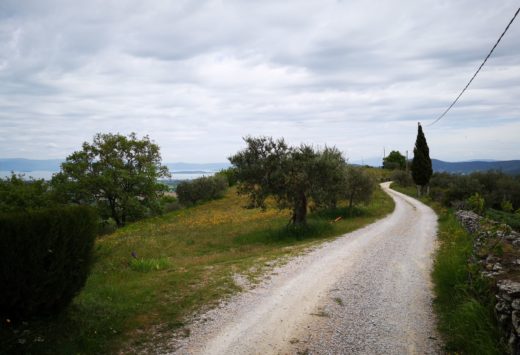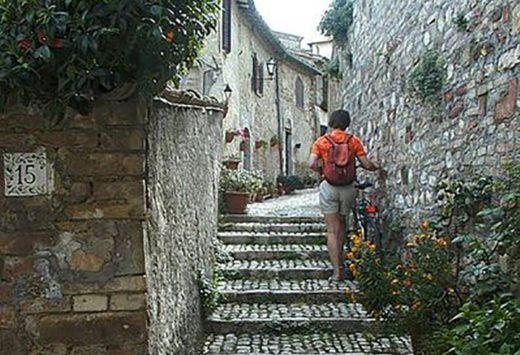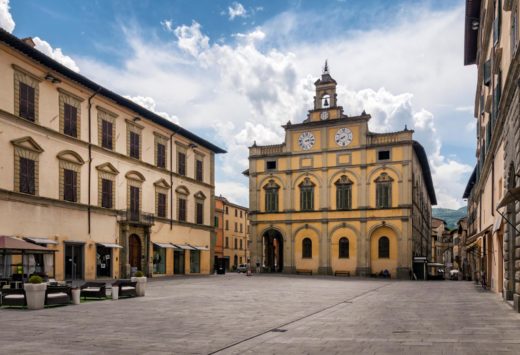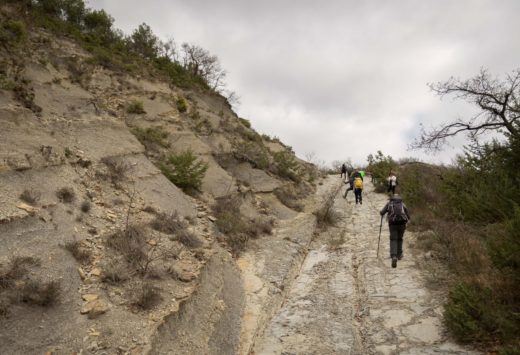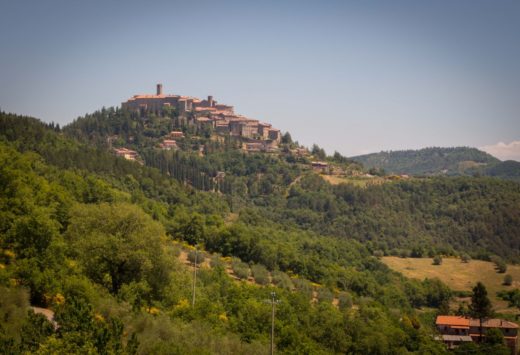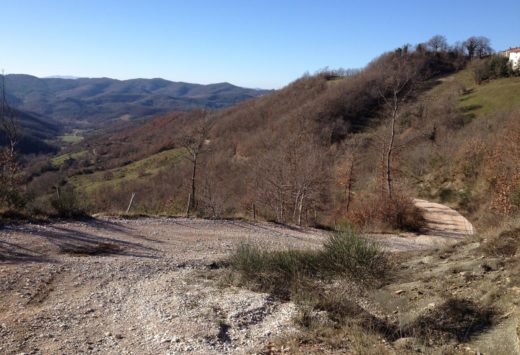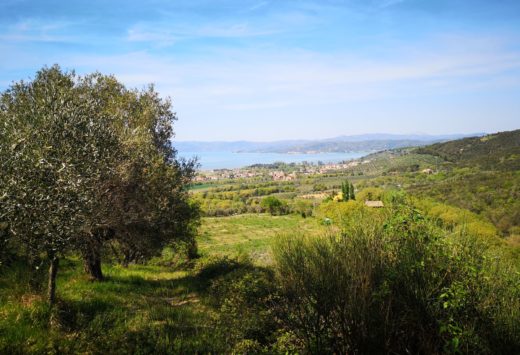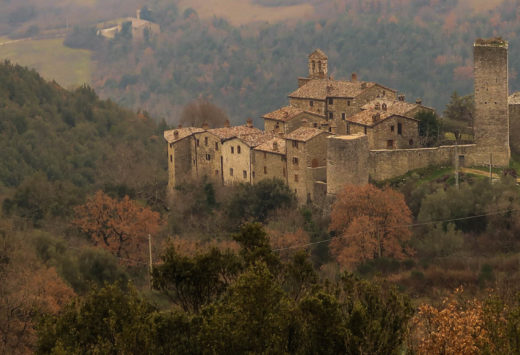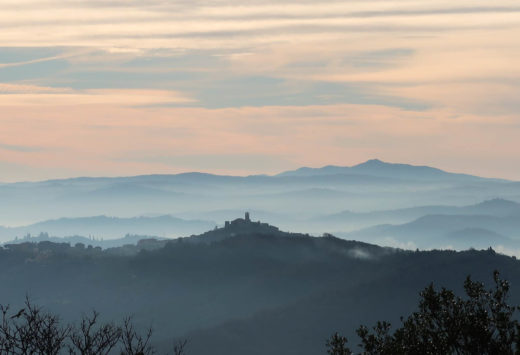THE HISTORY OF CITTÀ DI CASTELLO FROM ITS ORIGINS TO THE MIDDLE AGES
The origins of the inhabited city centre are not entirely clear, but it seems that the first dwellings in stilt houses arose near the ancient Tiber lake, which has since disappeared. Archaeological findings testify to the presence of a village of Umbrian-Sabellic and Samnite lineage since the first millennium BC, whose name was Tifernum and which for centuries was so strong as to reject Etruscan advances into its territories. Città di Castello still represents the most important city in the upper Tiber valley, an area that, in ancient times, was the subject of constant contention among the neighbouring Umbrian and Etruscans populations. In the 7th century BC, Tifernum was a wealthy and independent village which sustained commercial relations with the Etruscans and all the surrounding populations without being conquered by any of them.
It was only in the 3rd century BC, from around 283, that the city lost its independence and became part of the Roman Empire, following the Battle of Sentinum, changing its name to Tifernum Tiberinum. Under the new jurisdiction, the city experienced a period of growth and prosperity, especially from an architectural point of view, reaching its peak in the first century BC when the famous Pliny the Younger, who owned a private villa in Tifernum, had several public buildings built at his own expense.
Under the rule of Diocletian, in the 3rd century AD, Tifernum became part of the province of “Tuscia et Umbria” under the full control of Roman jurisdiction and experienced the spread of Christianity. A key figure in Christian preaching in the city was said to be San Crescentino or Crescenziano who, according to tradition, became a martyr at the hands of Diocletian himself at Pieve dè Saddi, south-east of the modern city.
The first bishop of the city was Eubodius, who ruled the fortunes of the community in the 5th century, before it was completely razed to the ground by Goths under Totila. Thanks to the commitment of bishop Florido, patron of the city, a new community was built on the ashes of old Tifernum which took the name of Castrum Felicitatis, and then later became Castellum Felicitatis between the 8th and 10th centuries, until it was called Civitas Castelli, the immediate forerunner of the current name: Città di Castello.
THE HISTORY OF CITTÀ DI CASTELLO FROM THE AGE OF THE COMMUNES TO THE VITELLI DYNASTY
Starting from the 11th century, Città di Castello acquired political autonomy becoming a strategic Commune (Municipality) in the region. Contested by Perugia and by the Papal State, firstly pro-Guelph and then pro-Ghibelline, it found itself alternately under the sovereign control of these two powers with short intervals of freedom. In 1326, after a brief spell of government by the Guelfi family, the Tarlati brothers (Guido, bishop of Arezzo and Pietro, called Saccone) conquered the city and took control of it until the popular uprising of 1335, which forced them out thanks to the support of Perugia. A few years later, in 1350, it was Perugia itself that claimed possession of Città di Castello, but with little success, because just one year later the inhabitants of Città di Castello rose up and regained their freedom.
In 1422, it was the turn of Braccio, the great leader of the Fortebracci da Montone family who, following a bitter struggle and with the political support of the Church, managed to seize Città di Castello and maintain government until 1428. From this moment on, and for about a century, Città di Castello remained under the control of the Papal State with internal struggles occurring between the local noble families, in particular the Giustini and the Vitelli, who gained the upper hand and succeeded in establishing an urban Lordship that lasted throughout the 16th century. In 1474, the city suffered the famous 80-day-long siege by the troops of Pope Sixtus IV. On this occasion, Niccolò Vitelli was defeated and forced to leave the city, relegated to exile in Urbino by order of the pontiff for eight years. In 1482, the old Lord, with the backing of a popular uprising and the support of the Medici, freed the city and rightly won the title of “Padre della Patria” (Father of the Homeland).
Apart from their political commitment, the Vitelli dynasty can also be credited with the cultural enrichment of Città di Castello. Thanks to the patronage of its rulers, the Umbrian Commune became a small Tuscan island in terms of its artistic and architectural forms. Throughout the 16th century, artists of the calibre of Ghirlandaio, Luca Signorelli, Vasari, Raphael, Gentile da Fabriano and Rosso Fiorentino were working in the city on commissions ordered by the Vitelli, creating a cultivated and enlightened environment which provided the backdrop that kindled the art of printing, which is traced back to Magister Mazzocchi in1538.
THE HISTORY OF CITTÀ DI CASTELLO DURING THE MODERN AGE
From the end of the 16th century, while retaining the patronage of the Vitelli, the city gradually lost its autonomy and fell permanently under the rule of the Papal State until the French invasion of 1798. The Napoleonic troops occupied the city for a year before being driven back by the Papal States, but they returned in 1809 and this time, having gained the upper hand over their adversaries, they succeeded in conquering Città di Castello until the fall of the French Empire in 1814. At that moment, the city lost one of its artistic jewels: “Lo Sposalizio della Vergine” (The wedding of the Virgin) by Raphael was looted by French troops and never returned to the city. Only after many years of negotiations was the painting handed back to Italy, and it is now on display at the Galleria di Brera.
With the first stirrings of the Renaissance movement, Città di Castello took an active part in its development, securing a Provisional Committee for itself in 1831 and adhering to the Roman Republic in 1849 until its annexation to the nascent Kingdom of Italy in 1860.
Today the city is the most important and densely-populated area of the Upper Tiber Valley and, thanks to the richness of its historical and artistic heritage and the dynamism of the events that are held there, it continues to attract a large number of visitors every year, all year round.


